Maxillaria tenuifolia, also commonly known as the “Coconut” orchid, is a popular species of orchid. They are quite easy and fast to grow in comparison with other plants, which makes them great for beginners.
These orchids are characterized by long thin grass-like foliage and deep red triangular flowers. Widely known for their coconut scent, these beautiful plants will fill your home with their sweet smell.
Natural Habitat
The Maxillaria genus is native to Latin America, growing at low altitudes up to 1500m. Therefore, these plants are accustomed to a dry season starting in December lasting until April, and a rainy season for the rest of the year, during which they get plenty of rainfalls.
Maxillaria tenuifolia is an epiphytic plant growing typically on rainforest trees. However, sometimes these grow as terrestrial plants. These orchids have an ascending growth tendency as the plant tries to reach light through the tree crowns.
How to Care for a Coconut Orchid
We can break this natural habitat down into several aspects which you can try to reproduce in your own home:
Light
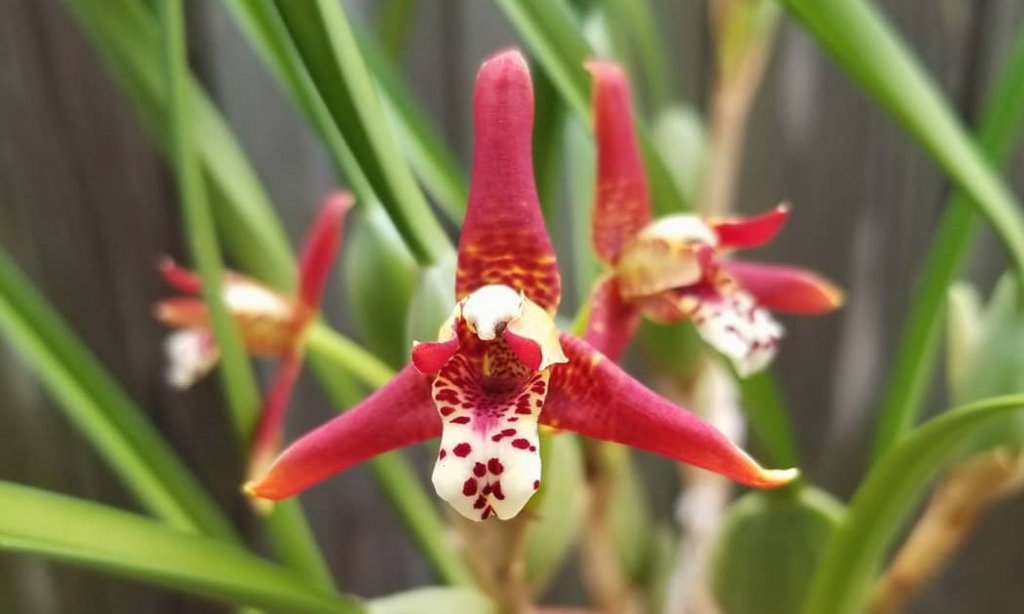
This orchid requires bright indirect lighting. You can place your plant on an east- or west-facing windowsill. They will also grow well in bright greenhouses and under fluorescent light.
Optimally they should have around 1500 to 3500 foot-candles of light. However, they can tolerate up to 5000 foot-candles.
If you place your coconut orchid in a low light environment, the long grass-like foliage will likely extend, as the plant will be searching to catch more light.
As with most orchids, you should not leave it under direct bright sunlight, which can damage the plant.
Temperature
Maxillaria tenuifolia grows well in intermediate temperatures. The optimal temperature is around 55F during winter nights and up to 75F during winter days. During the summer months, the plant can tolerate several degrees warmer.
Although it’s a forgiving plant, do not expose it to temperatures outside of this range for a prolonged amount of time. Also, ensure there is no cold draft continually coming from the window directly to the plant.
Humidity
These orchids prefer a humidity of 50 percent or higher, up to circa 70 percent.
If the room where you are keeping your orchid is dry, you can use a humidity tray to give your plant a boost. Alternatively, you can mist the plant daily to increase humidity if the air has humidity below 50%.
Please keep in mind that if the room is too humid, you require a better ventilation system to keep the plant healthy and reduce the risk of diseases.
Watering
The watering pattern for the coconut orchid should mimic the rainy and dry seasons of its natural habitat.
You should allow the medium to dry between watering during the dry season. Therefore, between December and April, the optimal watering is every two to three weeks. However, if you notice that the pseudobulbs are becoming wrinkled, this is a sign that your plant is dry, and it is time to water your orchid.
During the rainy season, you should water it around four to five times a week. Keep in mind that these plants get plenty of rainfall during this period, and constant moisture is needed.
You should still allow some drying between watering. Be careful though not to overwater your plant during this time, as this may lead to root rot.
You should start to reduce the watering frequency gradually around September to prepare the plant for the upcoming dry season.
Water quality is essential for a Maxillaria. We recommend that you use rainfall, reverse osmosis, or distilled water to minimize the risk of accumulation of minerals in the root system.
Potting Mix & Pot
If you want to achieve the most natural look for your coconut orchid, you should consider mounting it on tree ferns or cork. As an epiphytic plant, it grows on tree branches in their natural habitat; therefore, mounting is a great choice.
You can also plant your orchid in pots with fir bark, coir, perlite, and any mix that does not allow the roots to remain constantly soggy, for example, potting soil. A hanging basket with coconut husk at the bottom is perfect for this plant. The basket will allow the long grass-like leaves to fall gracefully.
A layer of sphagnum moss and perlite can be useful for some water retention, especially if the plant is in a relatively dry environment. Be mindful that the medium should provide adequate drainage. The amount of sphagnum moss should be limited to no more than 20 percent of the media, to avoid sogginess.
You can also add some horticultural charcoal to your orchid’s potting mix. The charcoal helps to get rid of stagnant water and protects the plant against acidification.
Repotting
Like most orchids, Maxillaria tenuifolia does not like root disturbance. If you see that your coconut orchid is starting to droop a lot over the edge of the pot, it is maybe time for repotting. Repotting is also a good idea if your orchid seems a bit tired, and a replenished medium would support it.
You should consider repotting after a round of blooming. You can repot the orchid every two years if necessary. Check out our repotting guide to learn how to do this safely.
When choosing a pot, you should go for a tighter container rather than a large one. You do not want to have a high percentage of potting media in comparison with the roots, because a pot larger than necessary may cause the roots to rot.
If your coconut orchid has some rotting parts, remove these before proceeding any further, leaving only the healthy bulbs. When doing so, for added protection, you should disinfect the scissors and the roots with a plant-specific disinfector before repotting.
Do not remove the brown sheaths on the stems between the bulbs of your Maxillaria. Their function is to protect the aerial roots, and removing this will damage the roots and, eventually, your plant.
Blooms
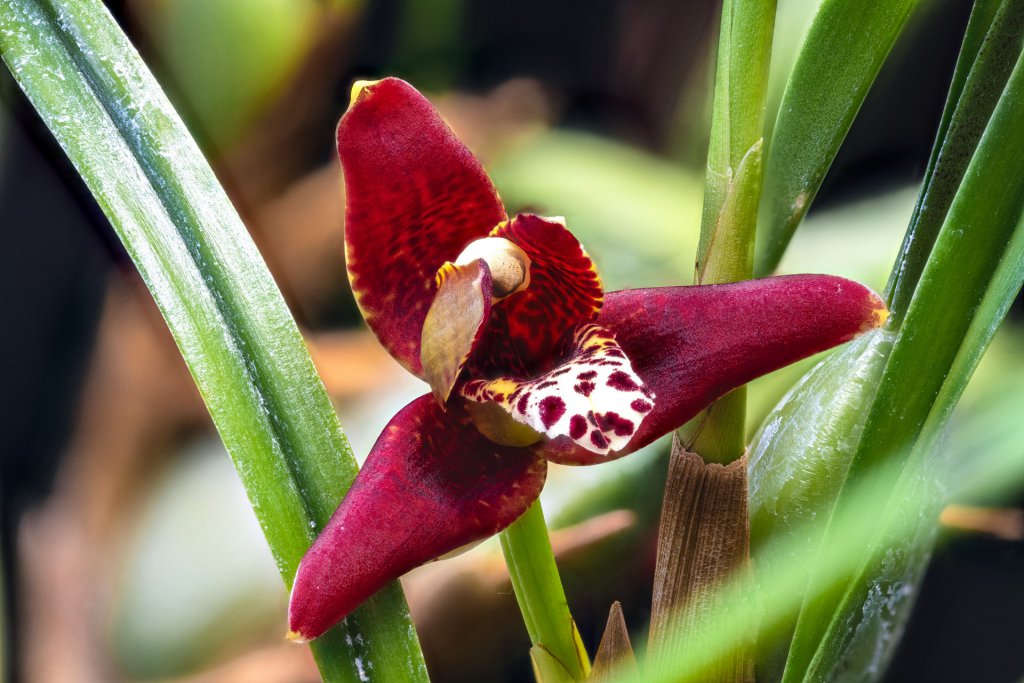
Maxillaria tenuifolia has a distinctive deep red bloom, which grows from one singular flower stem. The lip is white or yellow with red spots, resembling a leopard pattern. The spotting is unique to each clone, and it repeats the same pattern bloom after bloom.
The fragrant flowers appear from spring to summer, and they can last for around ten days. The flowers grow in short stems and look almost as if they are hiding beneath the foliage. The flowers’ sweet coconut aroma is intense and can fill entire rooms with their lovely fragrance.
When using bloom fertilizers during the summer months, some Maxillarias will have a prolonged blooming time reaching until late summer.
Fertilizer
The best time to start using fertilizer is early spring. During this time, you can use nitrogen-rich enricher fertilizer weekly. This type of fertilizer will support the overall growth and the metabolism of your plant.
During late summer, you can use phosphorus-based fertilizers to stimulate a prolonged flowering cycle.
You can use quarter strength if using weekly or half-strength fertilizer if used more sparingly. It is important to dilute the fertilizer to prevent root burn for your coconut orchid. Watering the plant before and after using fertilizer is beneficial. Watering will push the essential ingredients down to the roots.
Care Summary
| Light | Bright indirect light |
| Temperature | Intermediate, between 50F and 75F during winter Several degrees higher during summer |
| Humidity | 50 percent and above |
| Watering | Every two-three weeks during the dry season Several times a week during the rainy season |
| Potting Mix | Firbark, coconut husk, pearlite Not more than 20% sphagnum moss |
| Pot | Hanging baskets or mounting is preferred |
| Repotting | Every two years if necessary, after the blooming cycle has finished |
| Blooms | Starts in late spring Flowers last for several days |
| Fertilizer | Weekly quarter strength More often during spring and summer |
If you’d like to download this as a handy cheat sheet, right-click the image below and select “Save Image”:
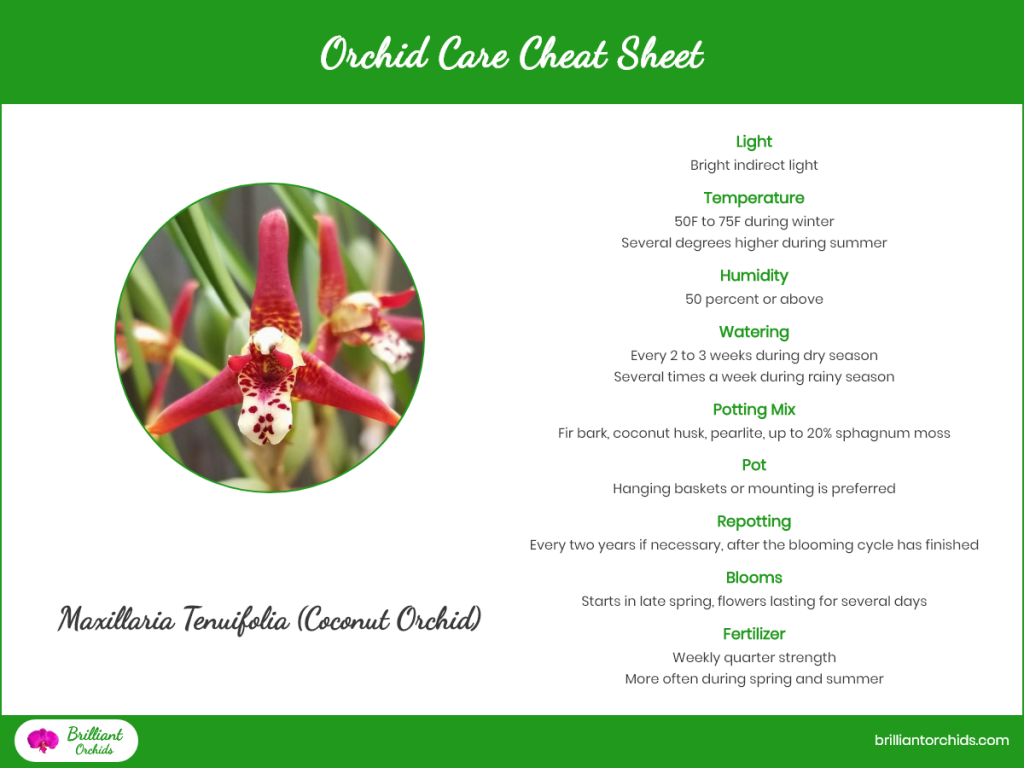
We recommend printing it off and keeping it by your orchid. Please share it if you find it useful!
Frequently Asked Questions
We consider this to be one of the easier orchids to grow, but there are some common questions and problems you may have:
Is the Maxillaria Tenuifolia Suitable for Beginners?
From my personal experience, it’s one of the most forgiving orchids. The required care is similar to that of Cattleyas. So if you’ve already grown a Cattleya, this should be quite easy for you.
The coconut orchid is a real fighter and can tolerate environmental changes better than most orchids. It is, therefore, a suitable plant for novices and anyone who does not have too much time to create the perfect controlled environment for their flowers.
My Coconut Orchid Is Not Blooming, How Can I Make This Happen?
Although easy to grow, Maxillaria tenuifolia is rather tricky with providing blooms. Before you consider inducing the flowers, be mindful that the resting winter months are essential for preparing the plant to bloom.
If you cannot wait to see your coconut orchid to show its flowers, exposing it to cooler temperatures during the night can stimulate the blooms.
Some Maxillaria growers report that placing the plant outdoors during spring and summer has resulted in blooms. This may be due to the higher temperature variance between night and day, and increased sunlight.
You can also use phosphorus-based fertilizers to stimulate the flowering, as shown in the guidance above. Also, exposing a coconut orchid to more light will help with the blooming.
How Can I Make My Maxillaria Grow Taller?
When your orchid is young, you can support the plant by staking the stems. When it grows, you can remove and stakes and interweave the stems so that they support each other as they develop. This will help your coconut orchid to grow horizontally and create a beautiful specimen plant.
My Coconut Orchid’s Pseudobulbs Look Dark and May Have Rot. How Can I Help It?
Dark bulbs may be a sign of the roots of your Maxillaria doing poorly. The pot may be too big for the plant, therefore causing root rot. Consider moving the orchid to a smaller pot, using the repotting guidance above.
If you notice this spreading to the other bulbs of your orchid, act quickly. Remove the dark bulbs as soon as possible, to prevent the spread. At the cut, put some cinnamon powder, which has antibacterial and antifungal properties.
We hope you found this guide useful! We’d love to hear about your experiences growing the coconut orchid. Leave us a comment below!

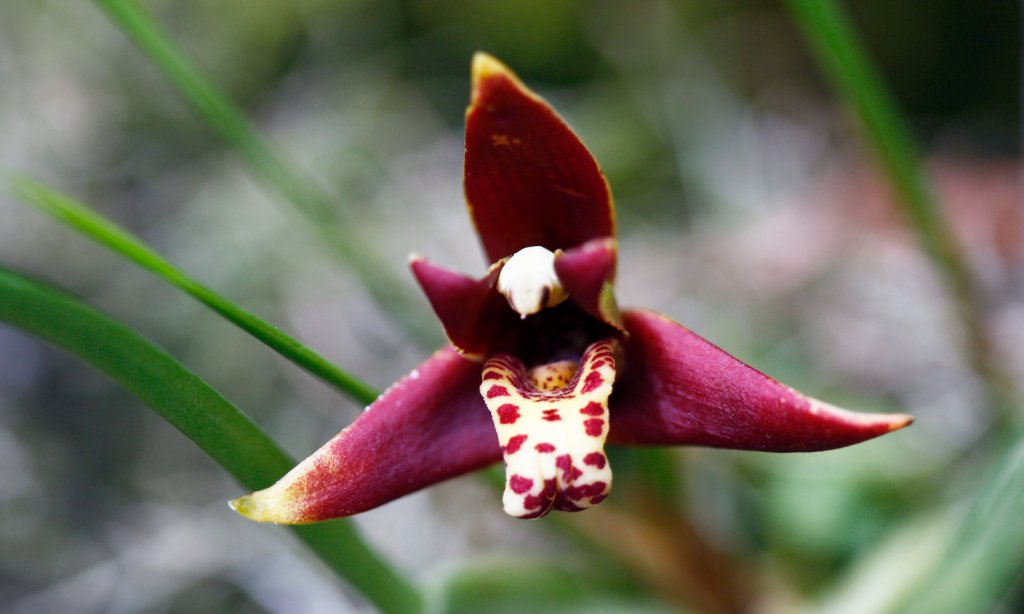
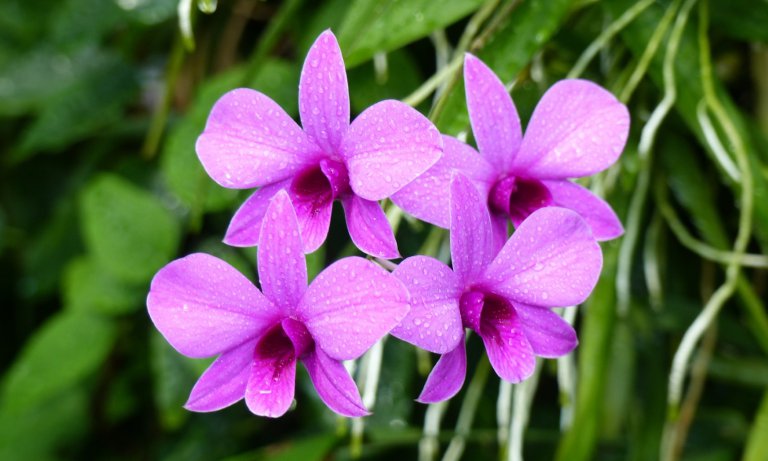
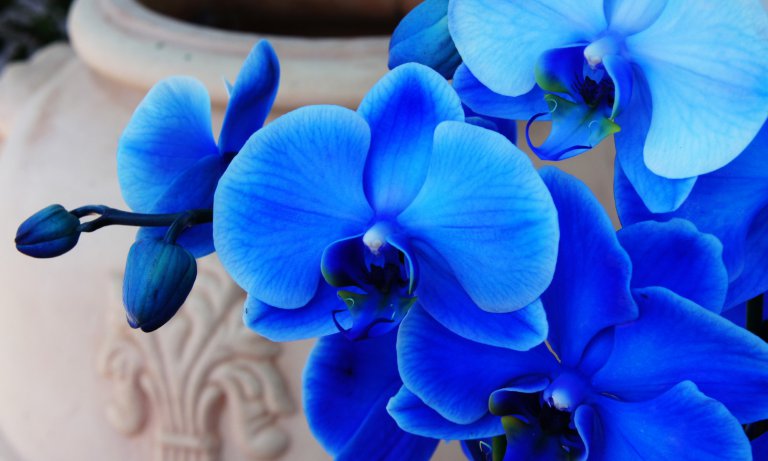
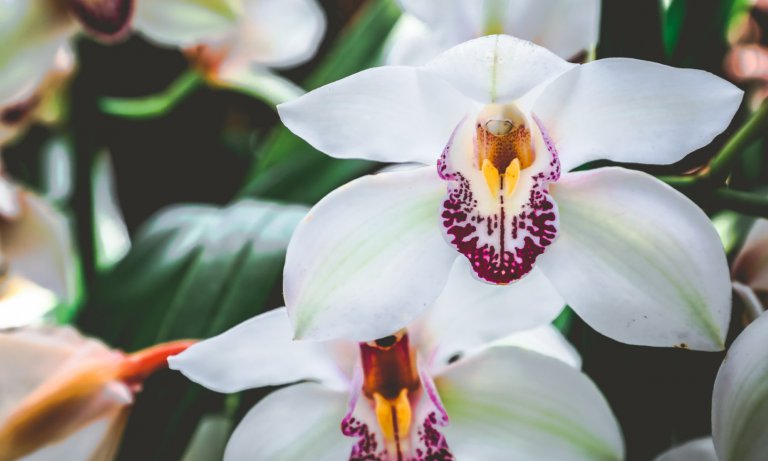
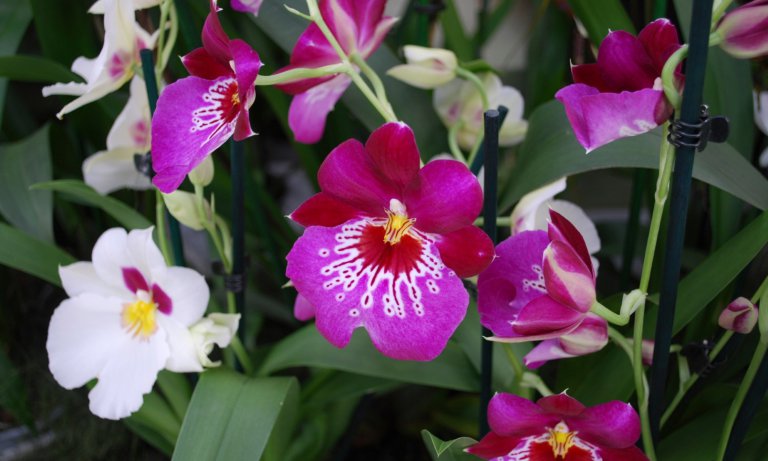
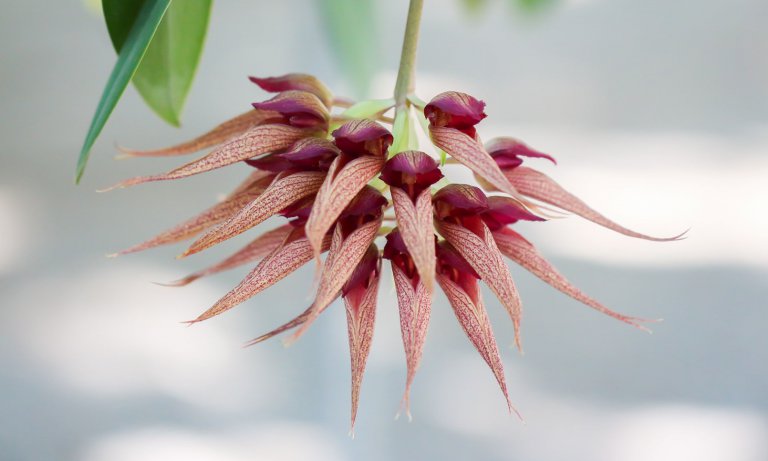
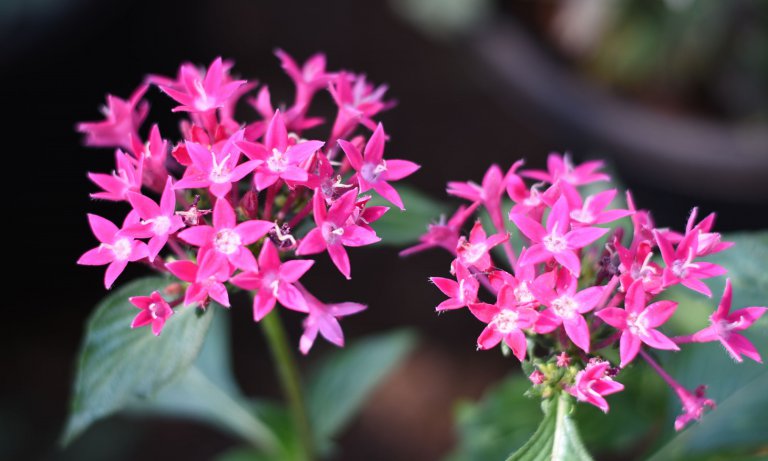
Great article. Wish i could print it out w/o all the ads.